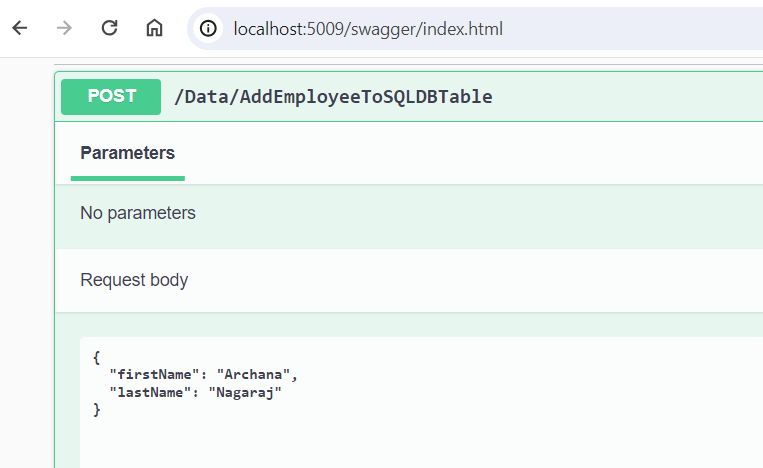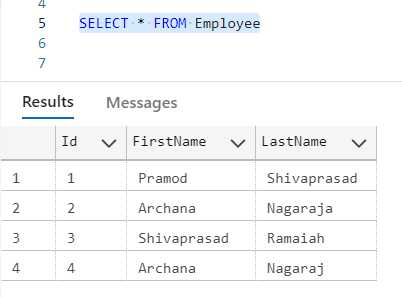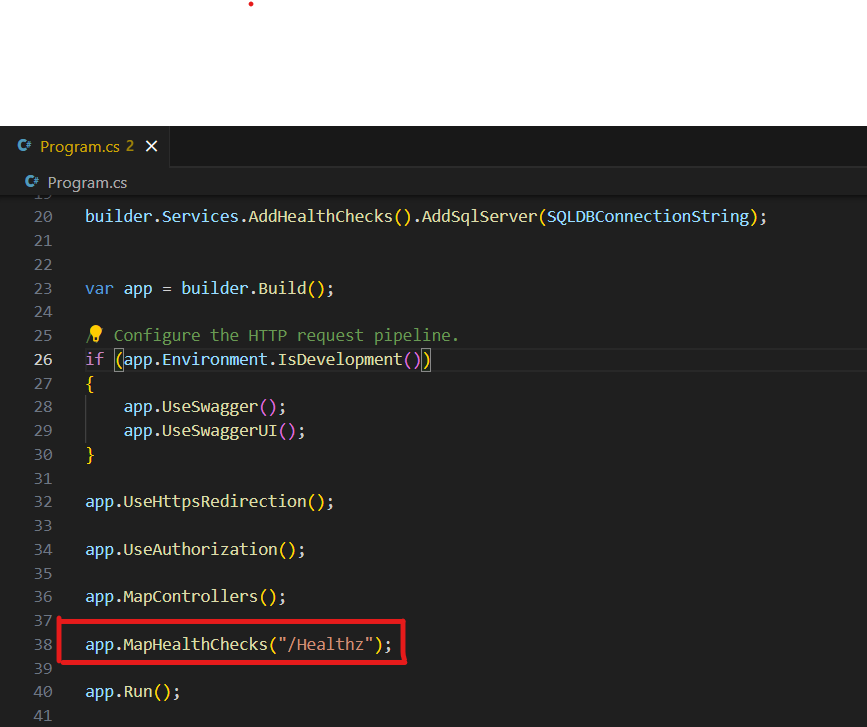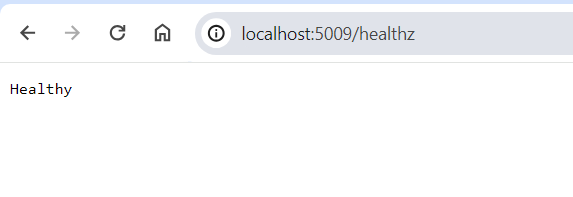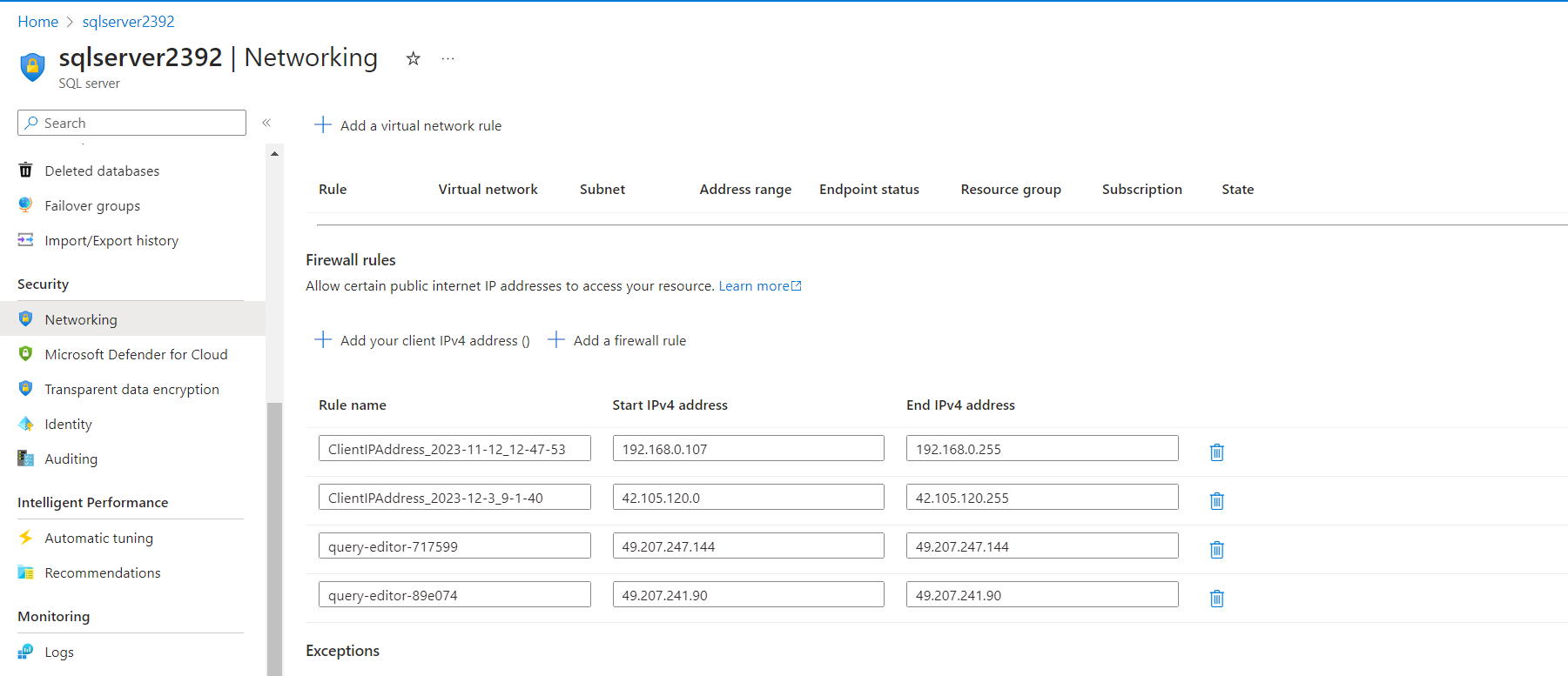- Open a new terminal in visual studio code
- Navigate to the desired directory.
- Run the command "dotnet new webapi" to create the web api application
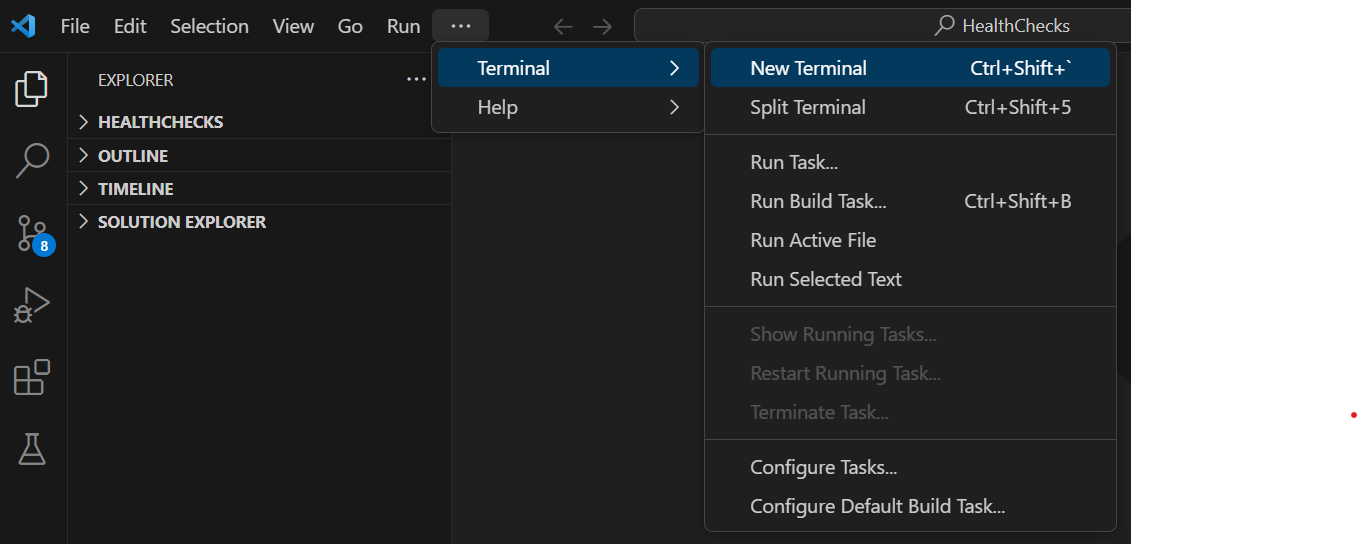
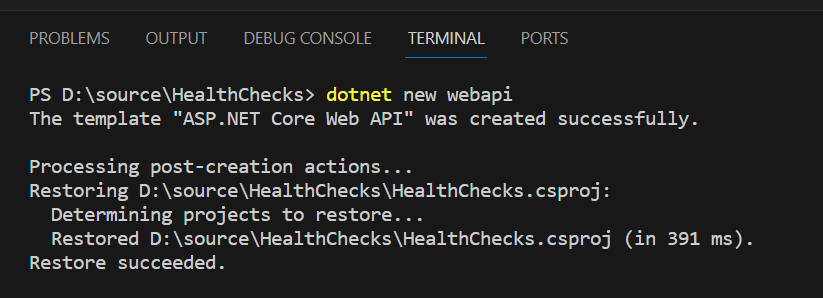
- Create a SQL server and a database under that in azure
- Create a new table "Employee" in azure SQL database using the below query
"Create TABLE Employee (Id int PRIMARY KEY IDENTITY(1,1), FirstName nvarchar(50), LastName nvarchar(50))"
- Copy the connection string of the database from the azure portal
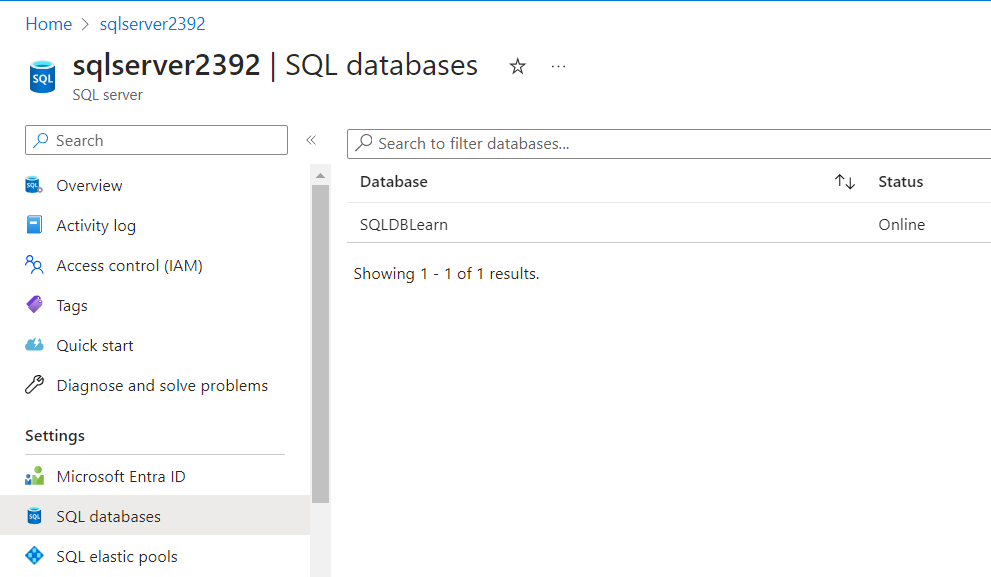

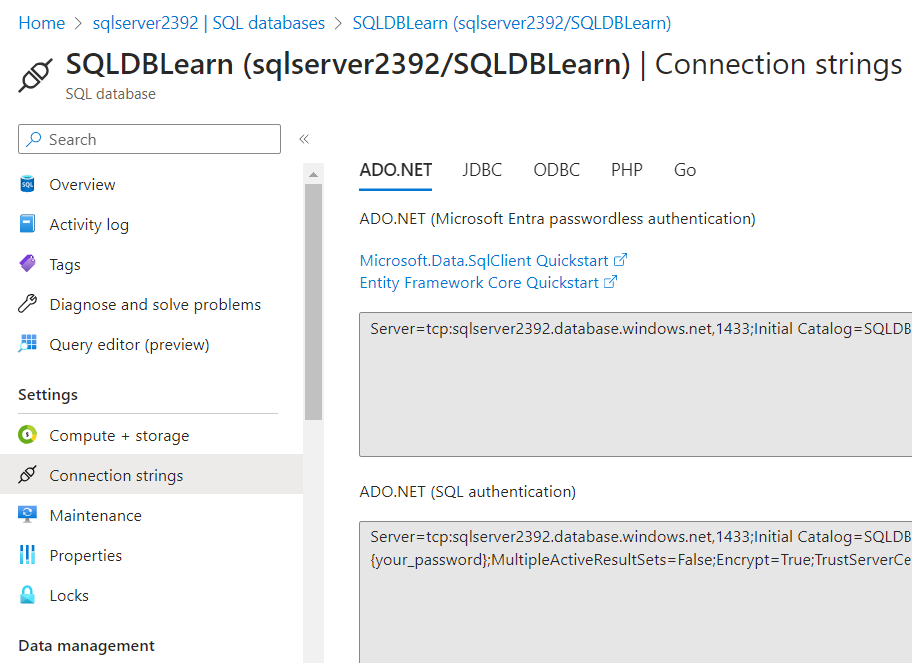
- Add a new folder named "Models" under the parent directory and add a new file named Employee.cs within the Models folder as shown below
- Create an Employee class with first name and last name properties as shown below

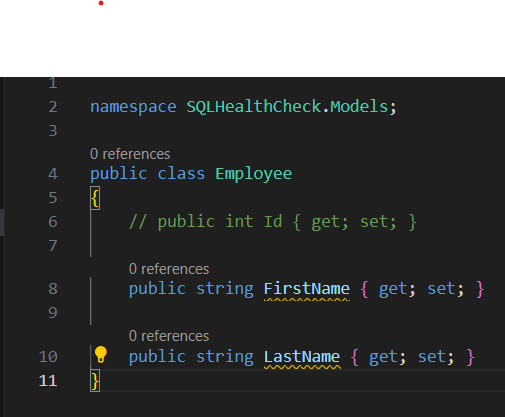
- Create a new file within the Controller folder and name it as "DataController.cs" as shown below.
- Add a new class named DataController within the DataController.cs file within the namespace. Add the using statement as shown below
- Add a new api named "AddEmployee" which accepts an input parameter of type Employee class. Add "HttpPost", Route attribute as shown below
- Add code implementation to add new employee to sql employee database table. Install required nuget packages
- Install below nuget packages
- Azure.Identity - For authentication and authorization to azure resources
- System.Data.SQLClient - For SQL DB related operations
- Azure.Security.KeyVault.Secrets - For interacting with KeyVault


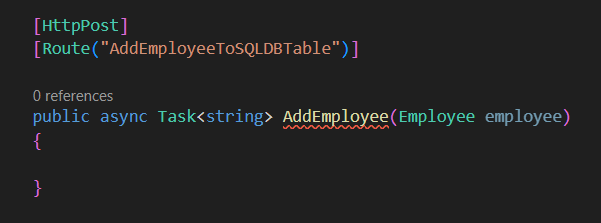
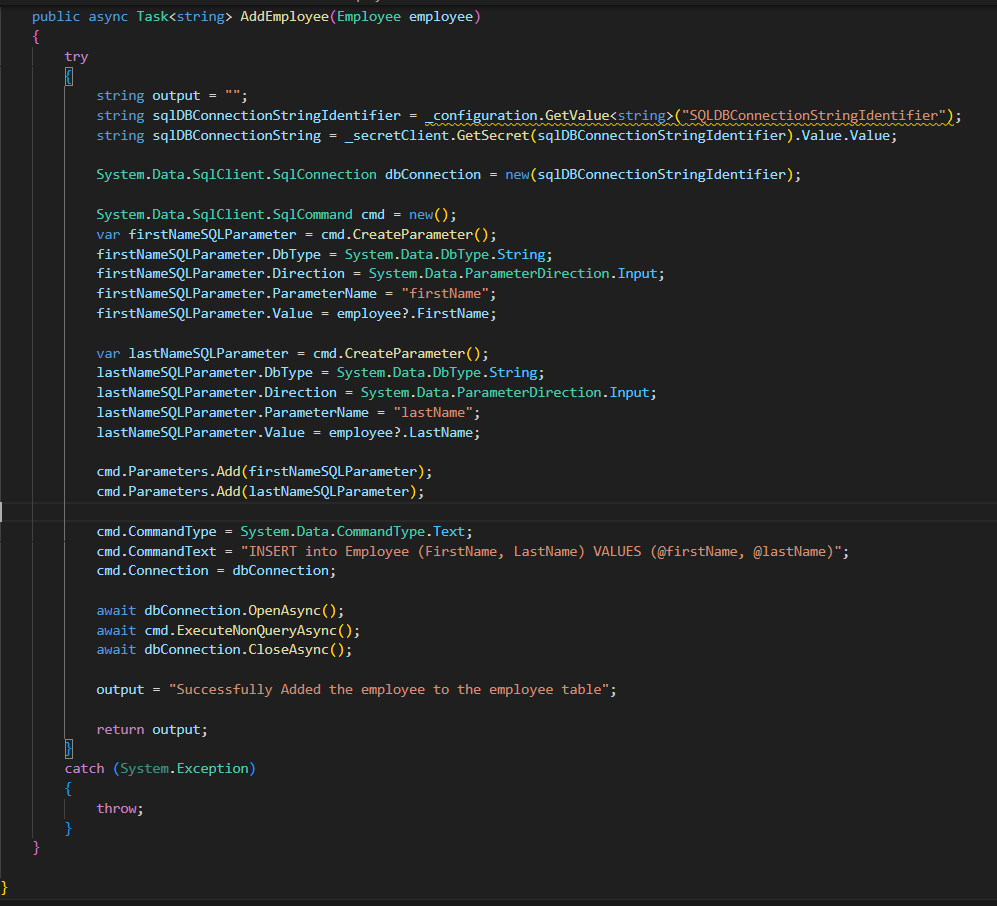
- Launch the swagger URL
- Give first name and last name and click on submit. New Employee will be added to employee table
- Employee details in the employee table
